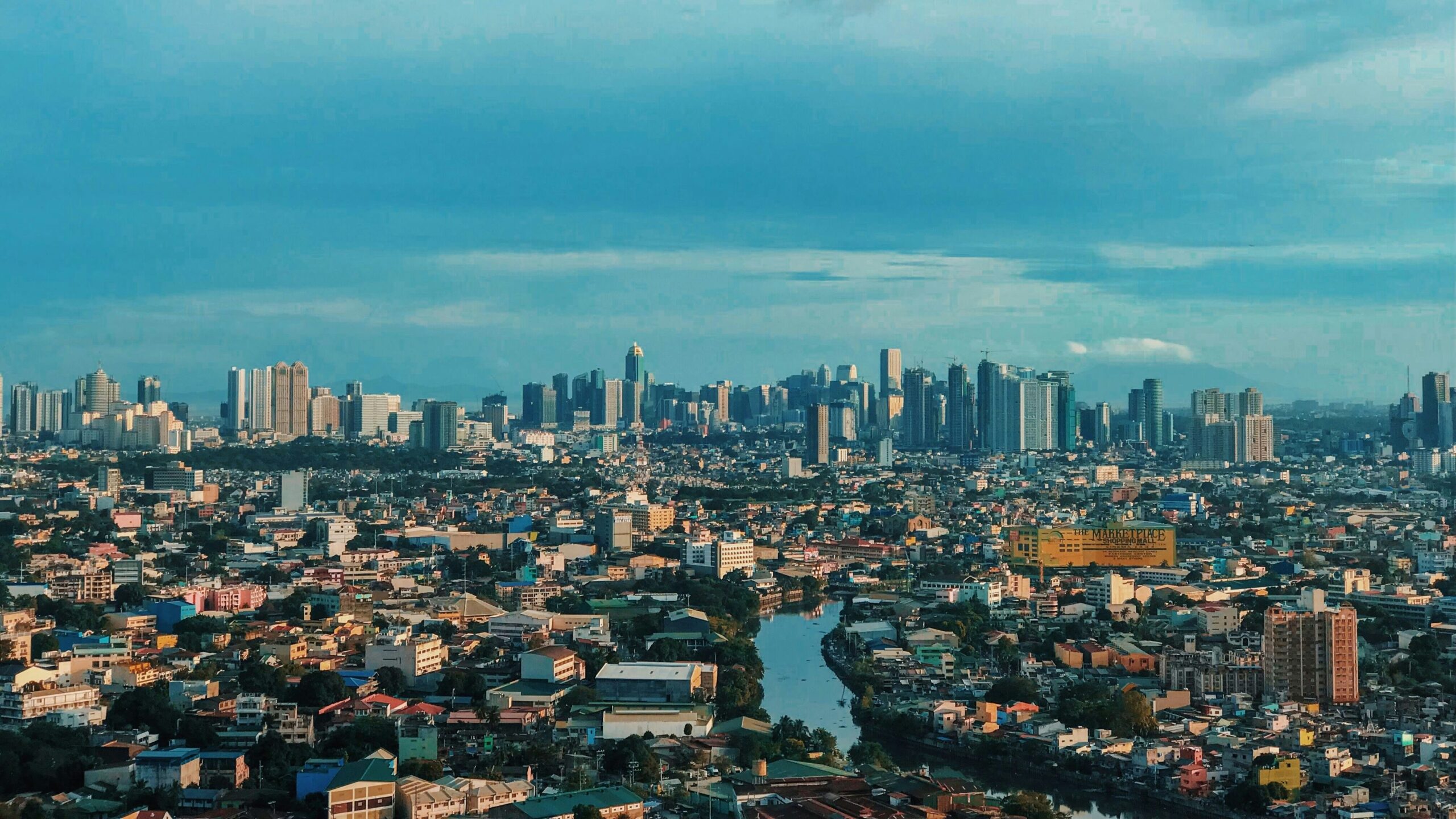
Manila city, the capital of the Philippines, known by many as the Pearl of the Orient. The given title reflects the city’s achievement for its historical significance, rich cultural heritage, economic powerhouse, and strategic position in Asia. Manila started as thriving pre-colonial settlement to its transformation into a modern metropolis. The city possess fascinating tale of resilience, conquests, and rebirth.
Manila during pre-colonial era
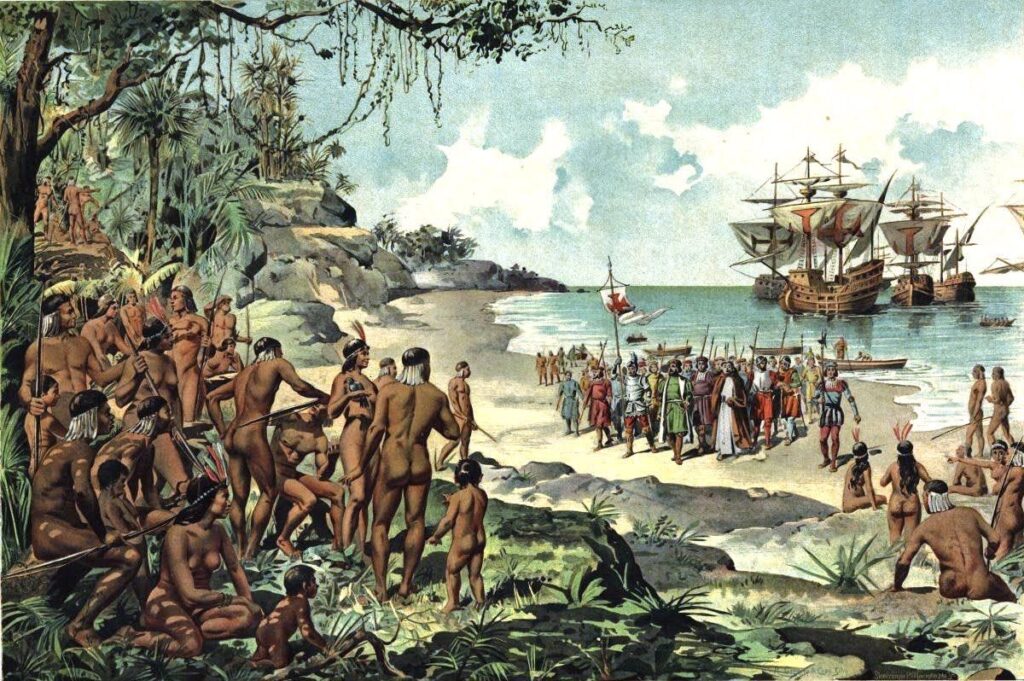
Before the Spanish colonization, Manila already became a thriving settlement due to its strategic location. Situated along the banks of Pasig river, it became the home to the Rajahnate of Maynila and serves as a major trade hub in Luzon.
During this period of time, the city of Maynila possess a strong trade relation with neighboring Southeast Asian nations, as well as merchants from China, India, and the Middle East. The people of Manila primarily Tagalos, lived in organized barangays. Moreover, they enganged in agriculture, fishing, and craftmanship.
With its fortified settlements, bustling marketplaces, and rich blend of indigenous and foreign influences, pre-colonial Manila become a testament and a strong evidence to the Philippines’ deep-rooted history long before the Spanish arrival.
Manila after the Spanish Conquest
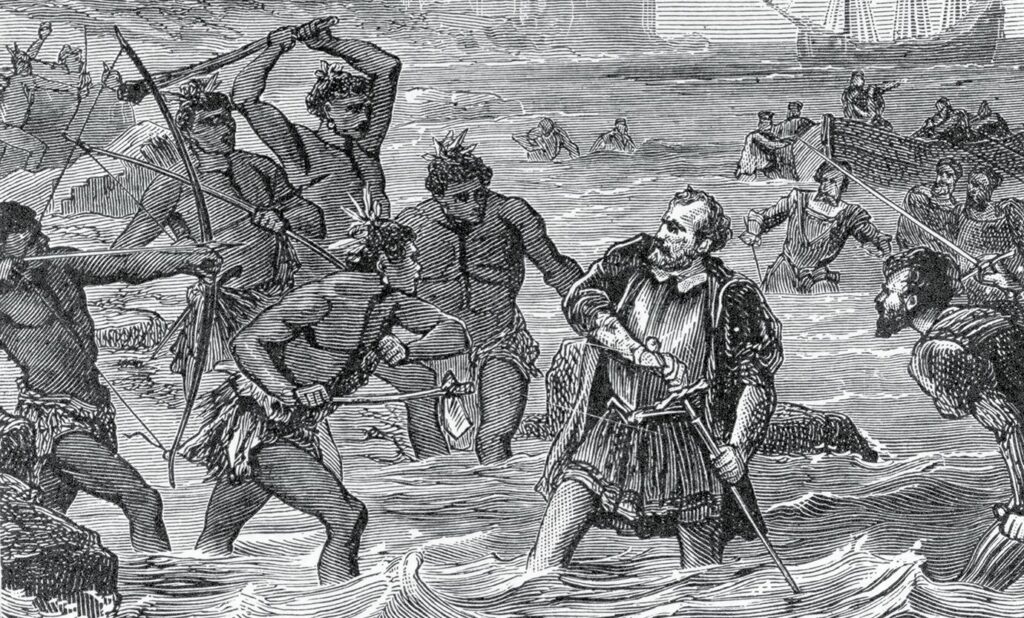
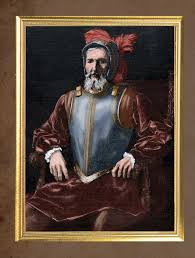
Governor-General Miguel Lopez de Legazpi, searching a new suitable place to establish a new colonial capital after being attacked by Portuguese pirates. He heard a prosperous kingdom of Luzon and sent an expedition under Marshal Martin de Goiti and Captain Juan de Salcedo.
The Spanish forces engaged in battles against the local rulers, including Rajah Sulayman, Rajah Matanda, and Rajah Lakandula. Initially, the local kingdoms successfully repelled the Spaniards, but they returned in 1571 and defeated the native forces.
After establishment of the Spanish rule in Luzon, Legazpi declared Manila the Capital of Spanish East Indies (Las Islas Filipinas). Legazpi chose Manila as the capital due to its strategic location on Manila bay and easy access to maritime trade routes.
Spanish Colonial Era and the Establishment of Intramuros
Under the leadership of Martin de Goiti, the Spaniards established the famous intramuros, a walled city that served as the political and religious center of the colony, on the ruins of the abandoned fortress of Rajah Soliman.
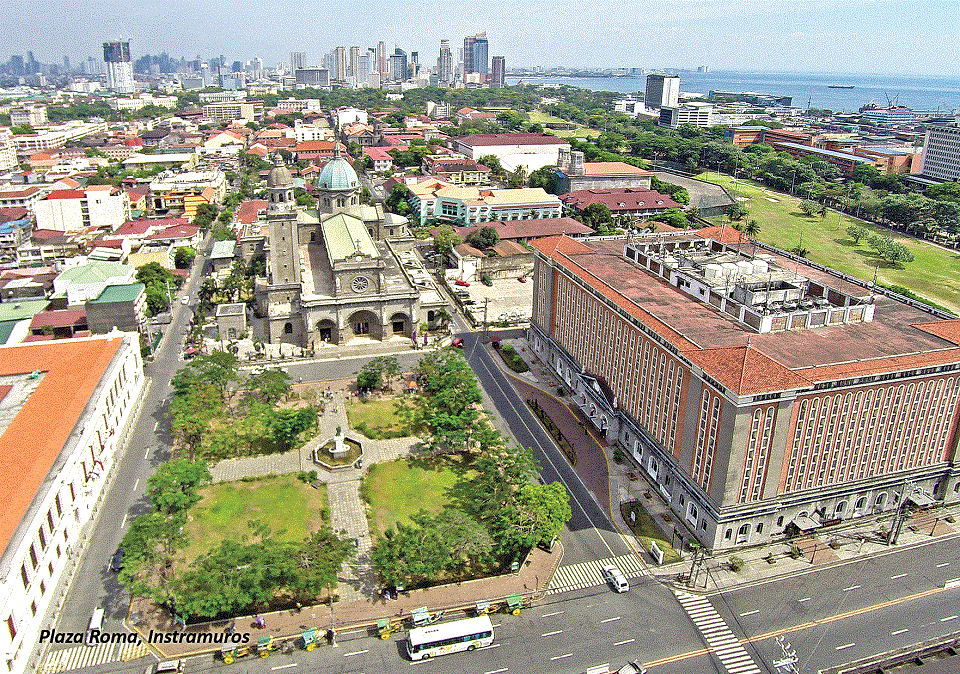
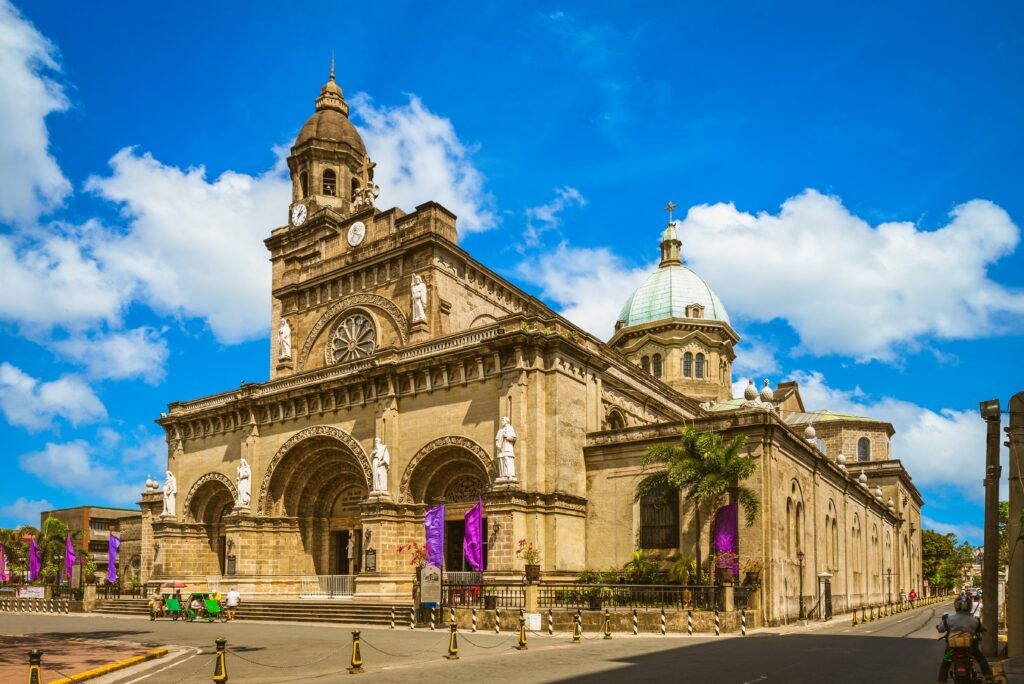
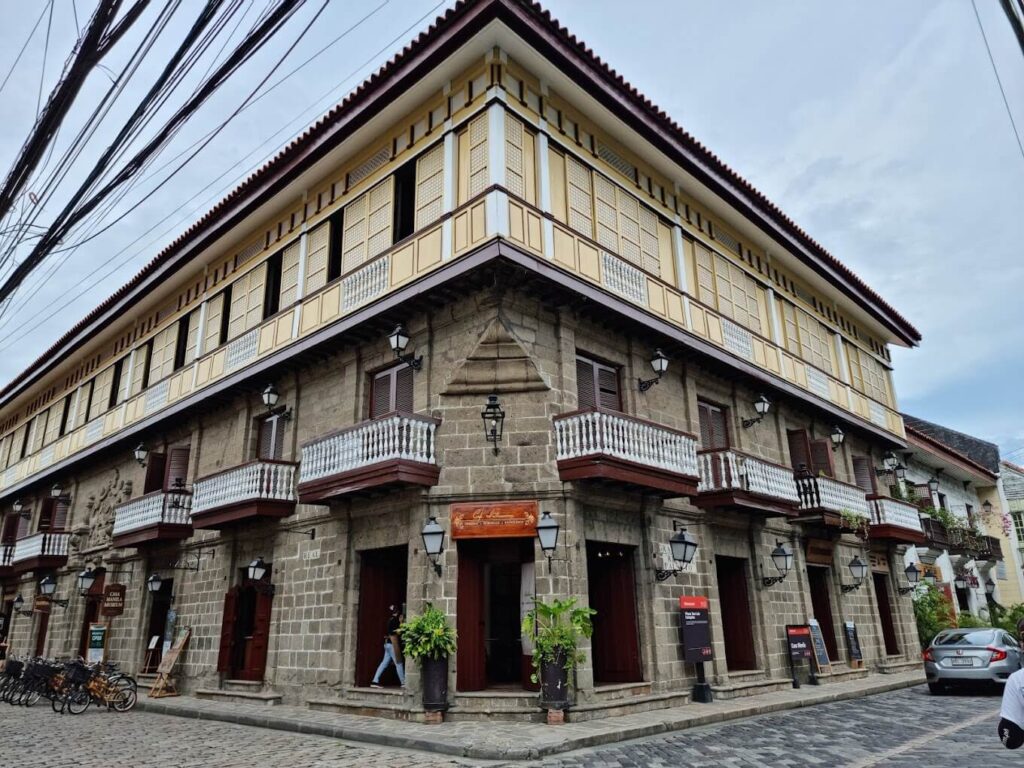
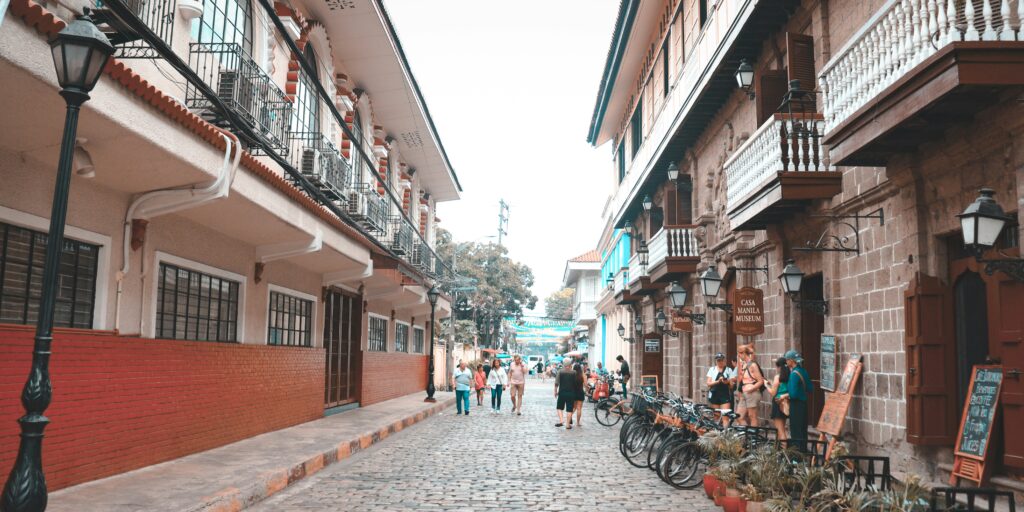
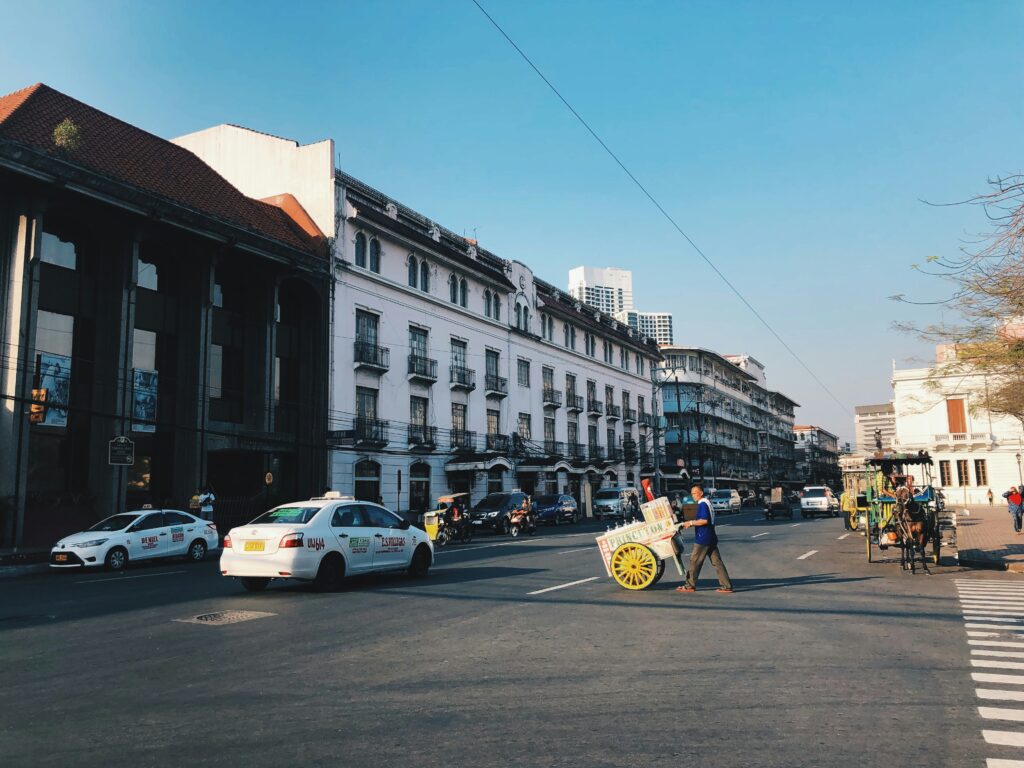
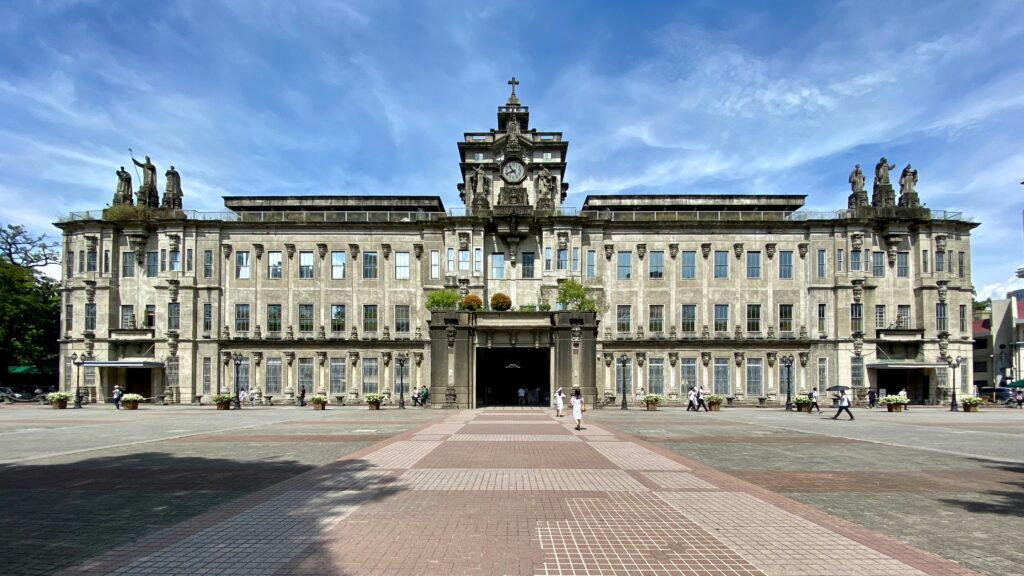
The new colonial city was built following King Philip II’s Laws of the Indies, which mandated a grid layout with narrow streets for shade, central plazas anchoring churches and government buildings, and all structures enclosed within the walled fortress of Intramuros (Santos, 2022).
Also, during this period, the Spanish constructed key landmarks of Intramuros. Some of these landmarks received a UNESCO world heritage for its rich history and uniqueness. Key landmarks included:
- Fort Santiago: a historic fortress built as a military defense structure, later used as a prison and became the place of execution of Jose Rizal
- San Augustin Church: The oldest stone church in the Philippines (built in 1607) and a UNESCO world heritage site.
- Manila Cathedral: became the symbol of catholic influence in the Philippines.
- Plaza de Roma: central plaza of intramuros, historically used for civic and religious gatherings.
- University of Santo Tomas: Founded in 1611, the oldest existing university in Asia.
- Casa Manila: A reconstructed Spanish colonial house that showcases lifestyle of affluent Filipinos during Spanish rule.
Manila as a Global Trade Hub: Manila-Acapulco Galleon Trade (1571-1815)
Manila-Acapulco galleon trade became the most significant aspect of the Spanish rule, this trade route connected Philippines, Mexico and Spain. The strategic location of Manila allowed it facilitate the exchange of Asian luxury goods, such as Chinese silk and porcelain, Indonesian spices, and Indian textiles.
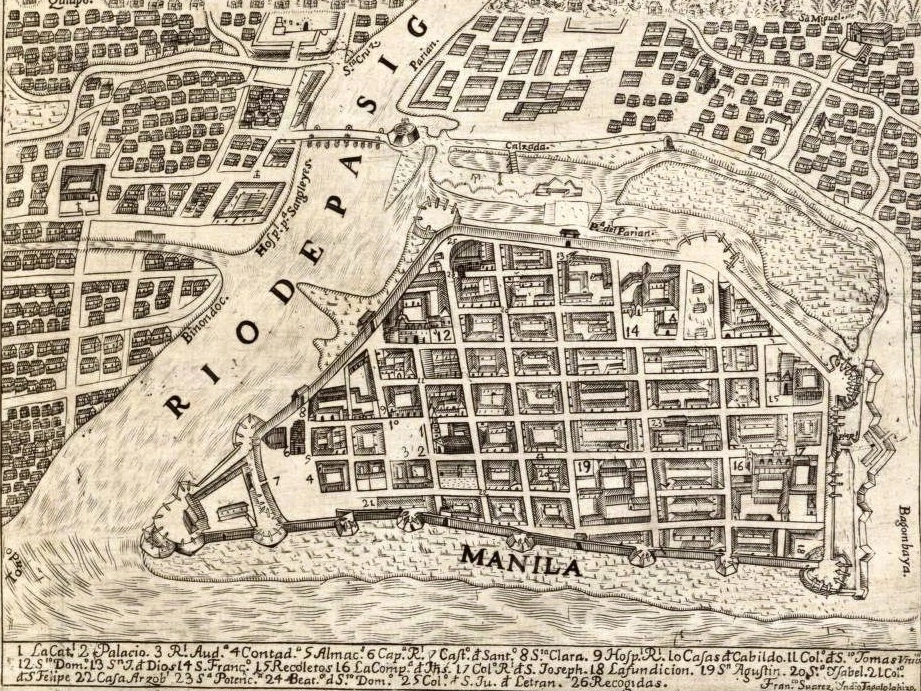
In return, the Mexican silver-which became the standard currency in Manila-and European goods were brought to the Philippines. This trade route made Manila one the wealthiest cities in the region, attracting Chinese, Indian, and Arabian merchants to the city.
Manila became a melting pot of Filipino, Spanish, Chinese, and Mexican cultures, shaping its architecture, cuisine, and traditions. The growing Sangley (Chinese) population led to the establishment of Parián, a district for Chinese merchants and traders, further solidifying Manila’s role as a global trading center.
However, the trade eventually ended in 1815 when Mexico gained independence from Spain, cutting Manila off from Acapulco. This forced the city to shift towards an open economy, paving the way for its integration into global markets beyond Spanish rule.
Further Urban Development of Manila under Spanish Rule (1815-1898)
Manila underwent significant changes, shifting from closed colonial port to a growing urban center. The Spanish administration started to modernizing the city, constructing new infrastructure, public buildings, and transportation networks to accommodate the people. Construction during this period expanded beyond the walled city of Intramuros, with new districts emerged to accommodate the population.
Urban Expansion and Infrastructure
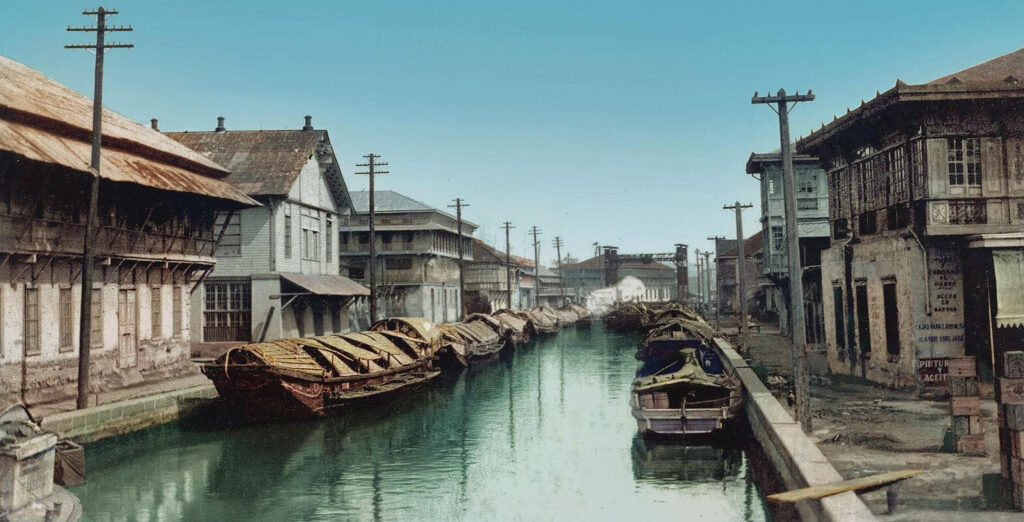

The Spanish government improved road networks, linking Manila to nearby provinces, facilitating the movement of goods and people. The Puente de España (Bridge of Spain), completed in the early 19th century, connected Binondo and Intramuros, becoming a crucial trade link between Manila’s commercial and administrative centers. Other bridges, such as Puente Colgante (Hanging Bridge), were later added to enhance connectivity.
To improve sanitation and public health, Spanish authorities built the Estero de Binondo and other canals, which helped regulate water flow and prevent flooding. The Carriedo Waterworks, completed in 1882, provided Manila with its first modern water supply system, improving public hygiene and reducing the spread of diseases.
Religious and Public Buildings
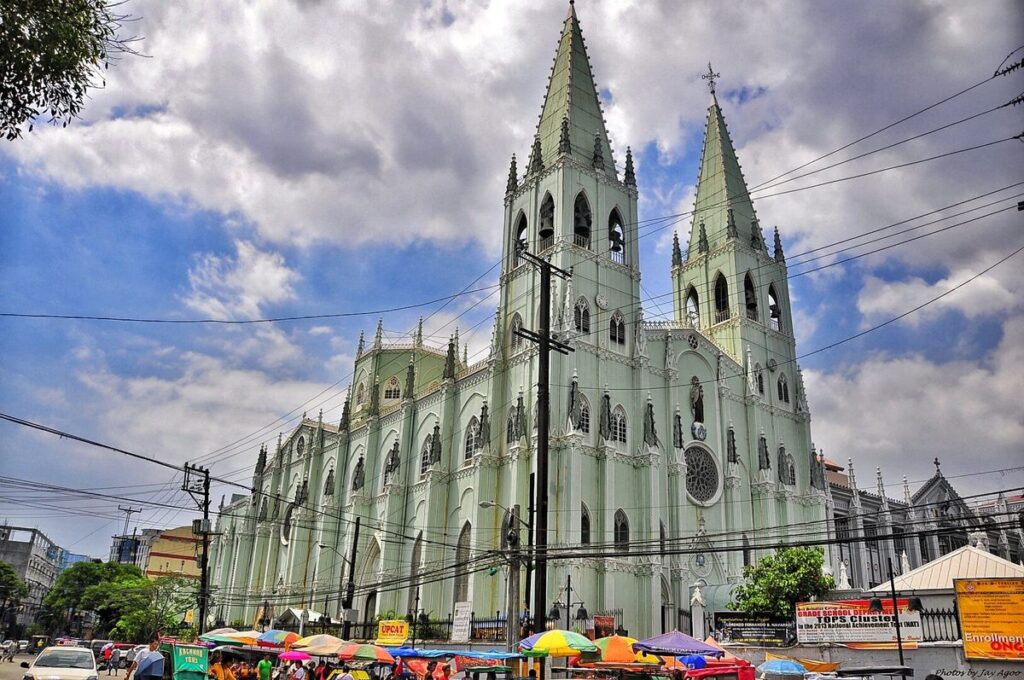
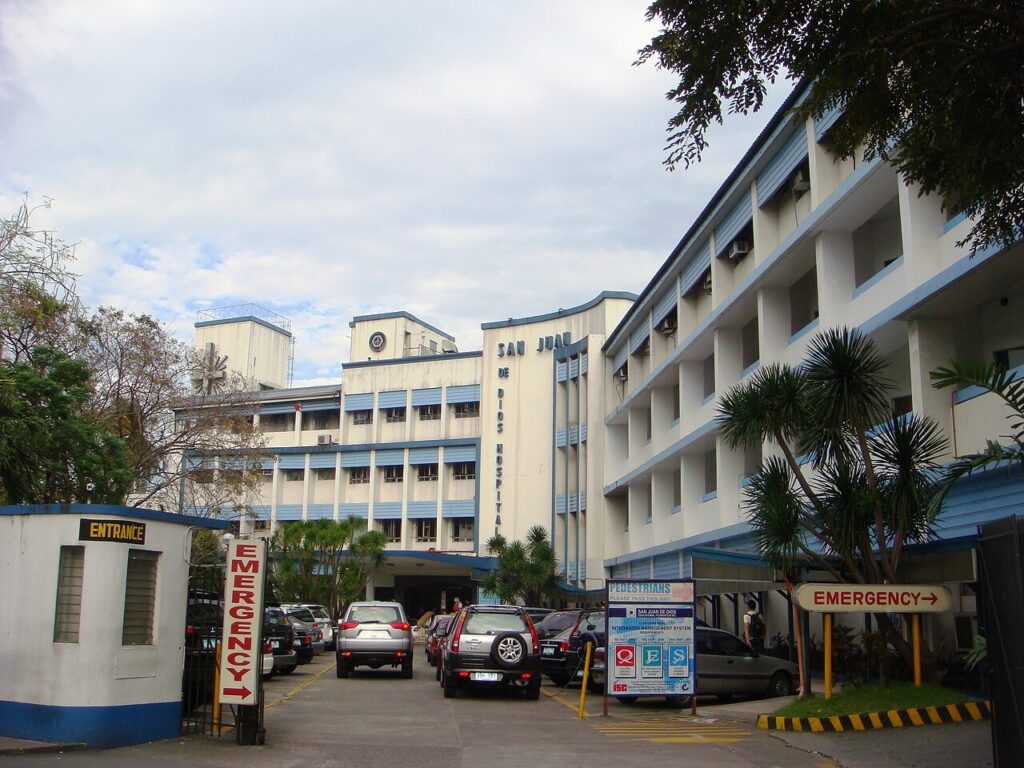
Construction of churches remained central to Manila’s development. The Spanish constructed the first all-steel church in Asia, called the San Sebastian Basilica in 1891. The steel structure designed by the Spanish to withstand earthquakes and other natural disasters.
Also during this period, the Spanish government constructed several educational institutions such as Ateneo Municipal de Manila (founded in 1859) and Escuela Normal Superior (1865). These schools trained teachers to educated the growing population of Manila. The Spanish government also modernized San Juan de Dios hospital to provide better medical care to the civilians.
Economic and Commercial Growth
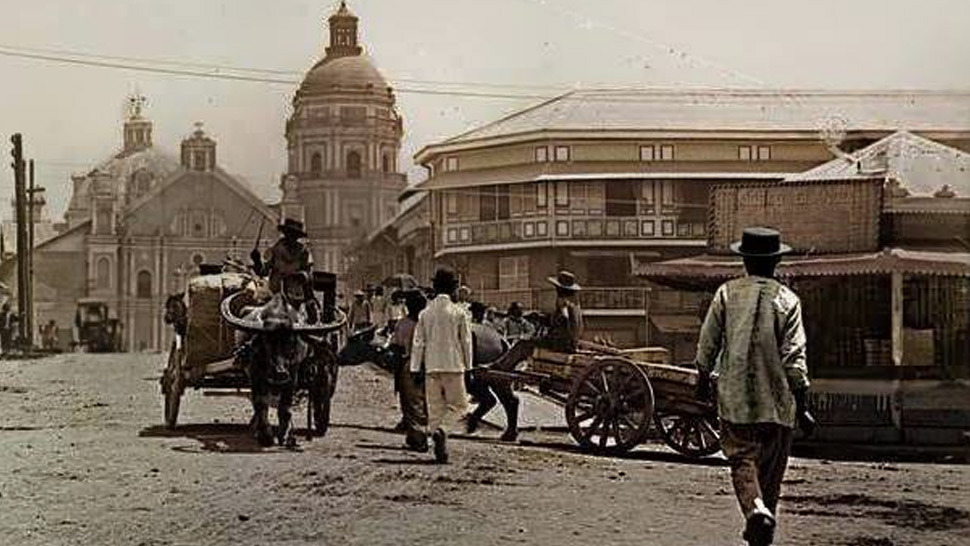
With the opening of Manila to international trade, commercial activity shifted to Binondo, which became Manila’s financial district. Previously, established for Chinese merchants, Binondo became the hub of banking , business, and trade. Many factories producing tobacco, sugar, and abaca flourished in this area.
To support Manila’s massive economic expansion, the Spanish government built the Manila-Dagupan railway in 1892, marking the first railway system in the Philippines. It connected Manila to agriculture regions in Central Luzon, allowing faster transport of goods to capital. The construction of Port of Manila that include expansion of docking facilities, also help to boost trade activity in the region.
Manila during The Philippine revolution (1896-1898)
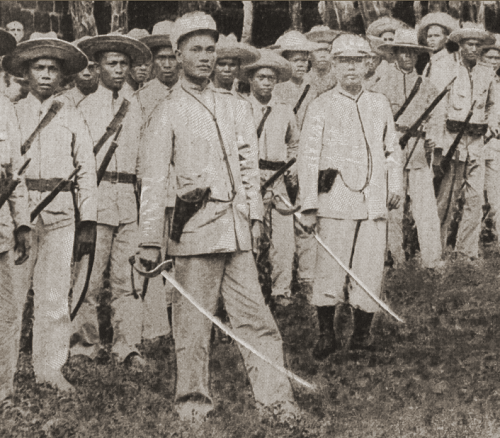
During the Philippine revolution, led by Katipunan under Andres Bonifacio and Emilio Aguinaldo, Manila became the center of Spanish administration and military power. The Spanish implemented strict rule that limits any revolutionary activities within the city.
During this time, the execution of Jose Rizal occured in 1896 at Bagumbayan (now Luneta) and fueled further nationalist sentiment. The Spaniards reinforced Manila’s defense, including Fort Santiago and Intramuros, as rebellion spread through the Phillipines.
Battles between the Katipunan and Spaniards erupted in nearby provinces like Cavite and Bulacan, while Manila remained a contested zone. Also during this time, disruption occured in trade and commerce, affecting Manila’s role as a global trade hub.
Manila under American Rule (1898-1946)
Following Spain’s defeat in the Spanish-American war, the United States took over the Philippines through the Treaty of Paris in 1898. Manila saw massive changes in urban planning and modernization during the American period. The Burnham Plan of 1905, designed by American architect Daniel Burham with the aim to modernize Manila (Santos, 2022).
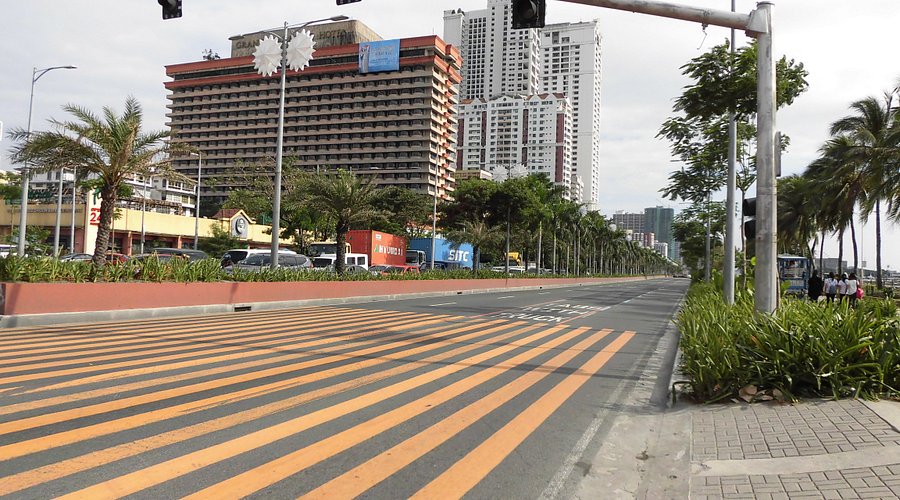
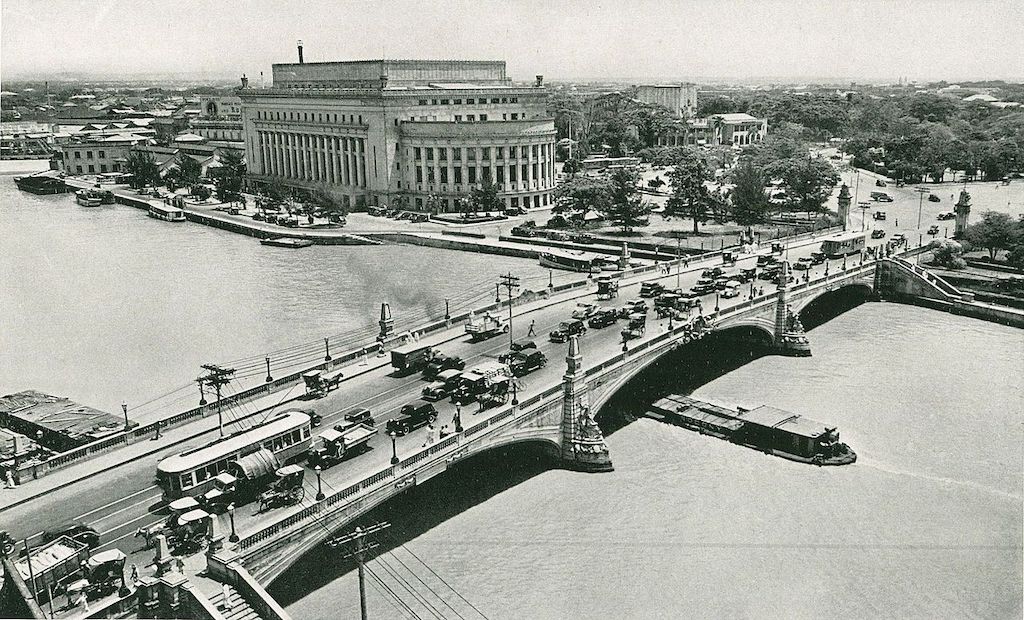
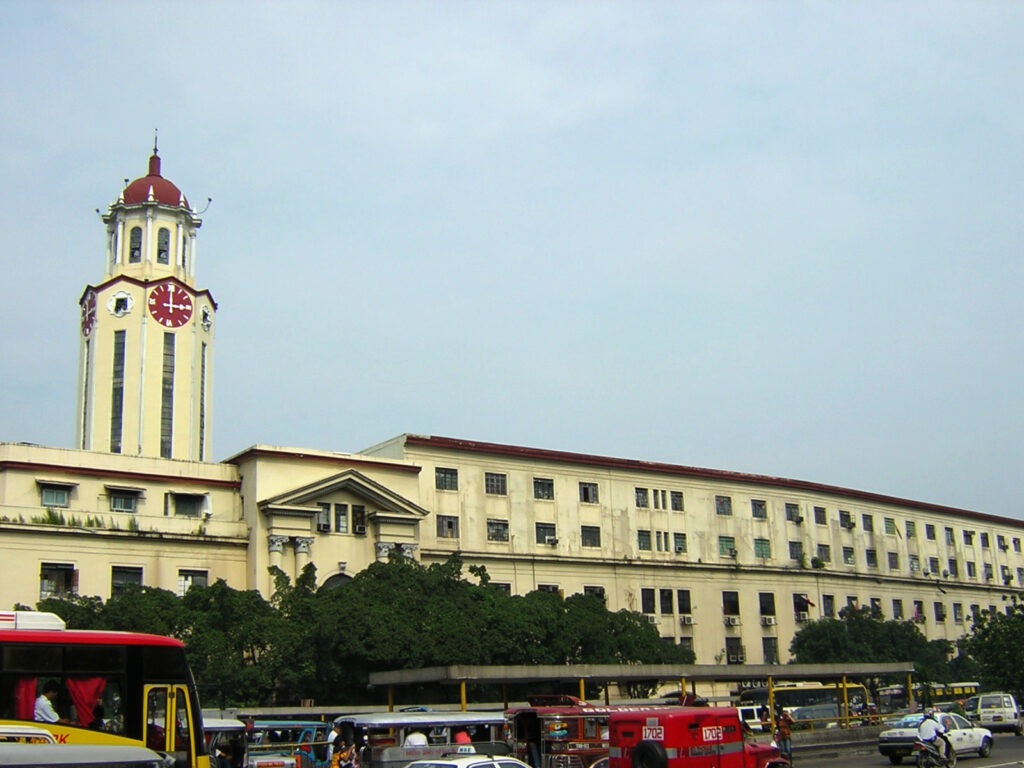
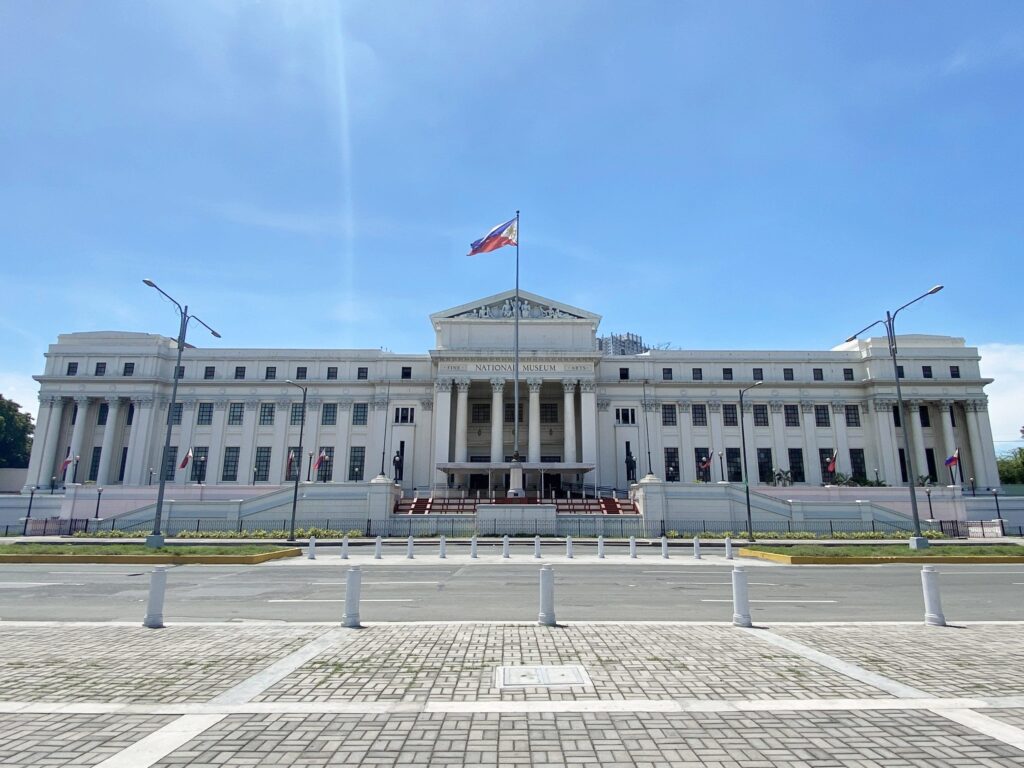
The plan implemented new urban planning with organized city layout, wide roads, parks, and neoclassical government buildings. The American constructed Major street like Roxas Boulevard (then Dewey Boulevard) and Jones Bridge to improve Manila’s transportation access. Furthermore, they also established new government buildings like the Manila City Hall and the Legislative Building.
The Americans also introduced modern sanitation and public health programs, which include sewerage system and water supply. This new facilities also reduce spread of diseases like cholera and malaria. The Americans also established new hospital like Philippine General Hospital (PGH) to provide modern healthcare services.
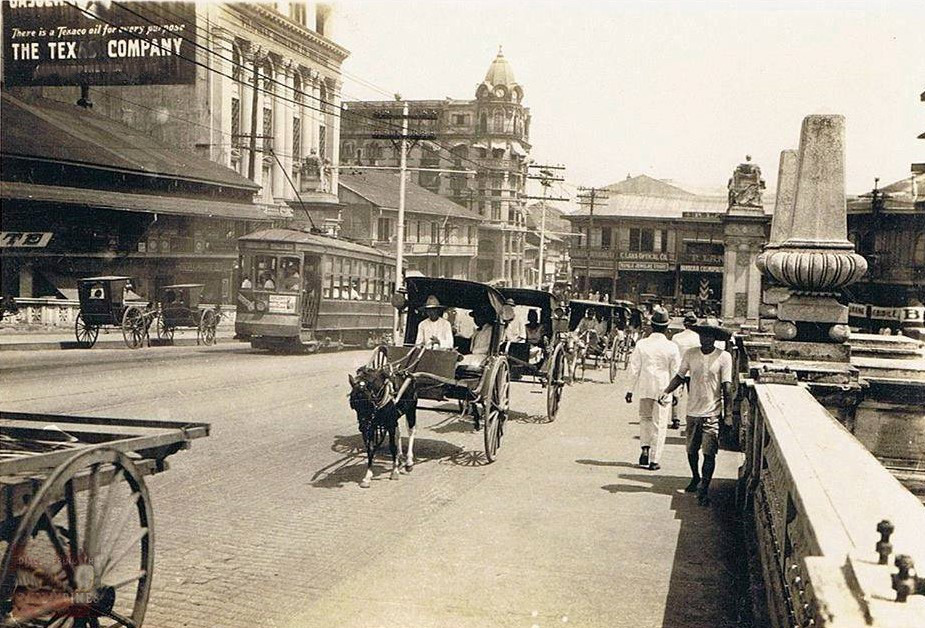
The new government also introduced a new public education system, with English as the medium of instruction. Schools like the University of the Philippines (founded in 1908) and Philippine Normal School (now Philippine Normal University) were established. The influence of American culture, including cinema, literature, and sports like basketball, became widespread in Manila.
The arrival of American businesses to Manila also led to an increase in employment opportunities. The introduction of modern banking system helped to facilitate economic activities in Manila. American rule successfully reshaped Manila’s urban landscape, governance, and social system. Today, many of the infrastructure and policies from the American era continue to influence Manila’s development.
Post-War-Rebuilding and Independence
Following the end of World War II, Manila suffered extensive damage, with many of its infrastructure, historical landmarks, and government buildings reduced to rubble. As a newly established Republic of Philippine took control of the country in 1946, efforts to modernize and reconstruct the capital became a priority.
Post-war years, the Philippine government under President Manuel Roxas, initiated recovery programs aimed at restoring essential services and rebuilding the economy. The reconstruction period saw rebuilding of government institutions, roads, and bridges. Also during this period, the United States provided the newly independent republic with financial aid to support the country’s recovery efforts.
Manila under President Ferdinand Marcos and post revolution
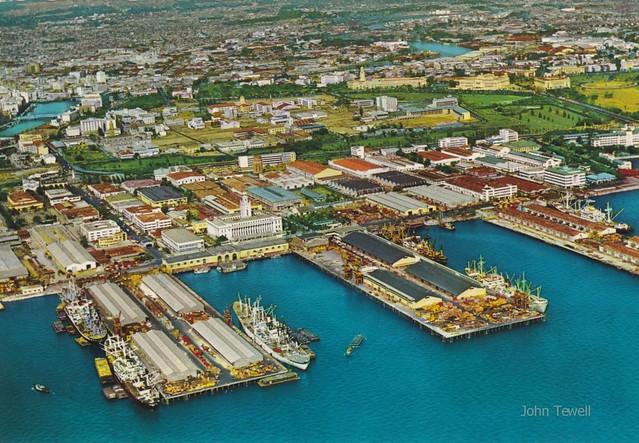
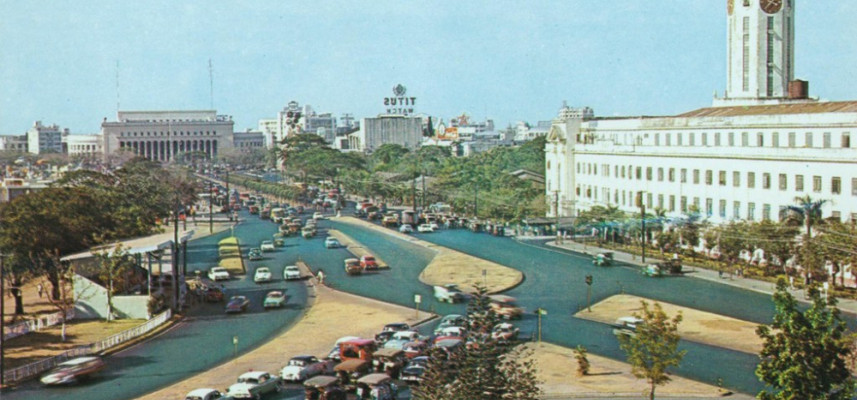
After few decades, Manila experienced significant urbanization and economic growth. The government successfully constructed major infrastructures including the construction of highways, cultural centers, and government complexes such as the Philippine International Convention Center and the Cultural Center of the Philippines. However, rapid urbanization also led to issues such as overpopulation, traffic congestion and the establishment of informal settlements.
The post-1986 People Power Revolution brought in democratic reforms and a renewed focus on the city’s development. Effort to decentralize governance allowed Metro Manila to grow as a regional economic hub. Under successive administrations, investment in transportation, real estate, and business districts expanded. The construction of major highways, the development of commercial centers like Makati and Bonifacio Global City, and the expansion of the railway system reflected Manila’s continuous modernization.
Manila in the 21st Century
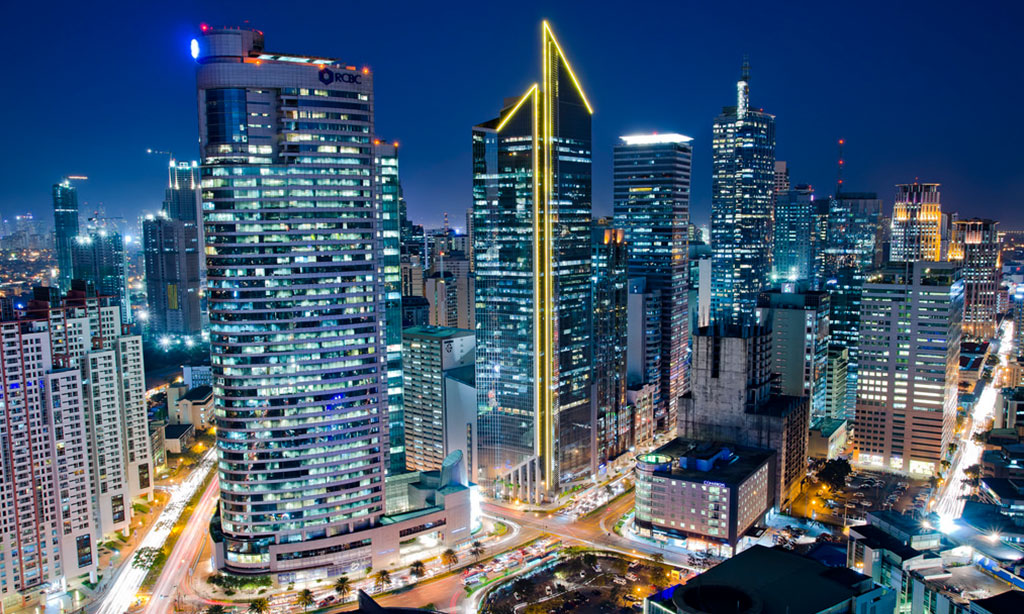
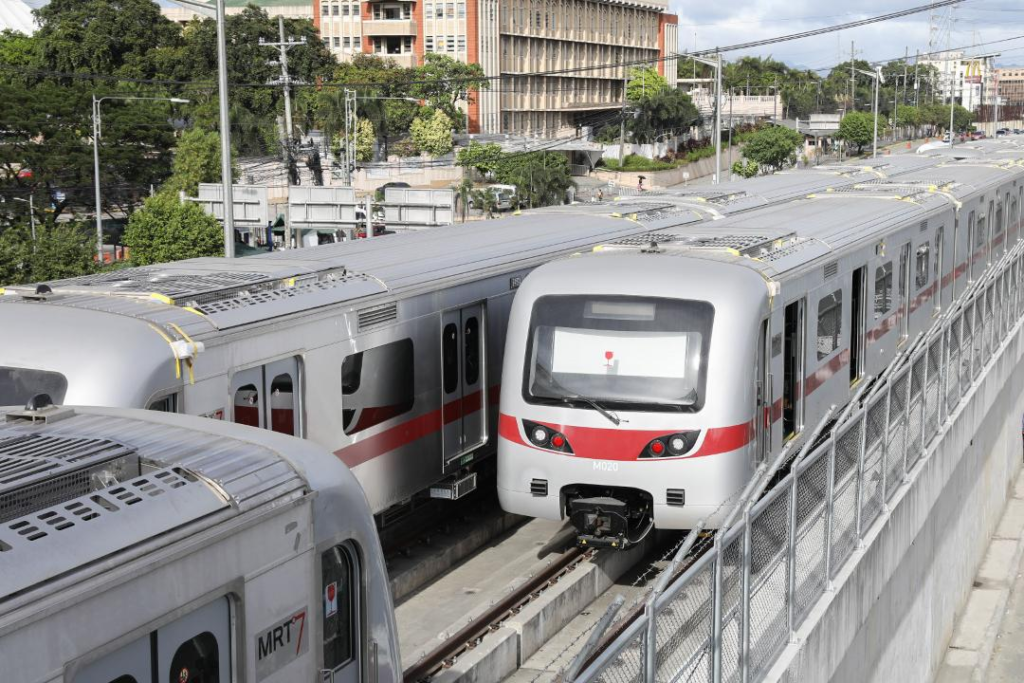
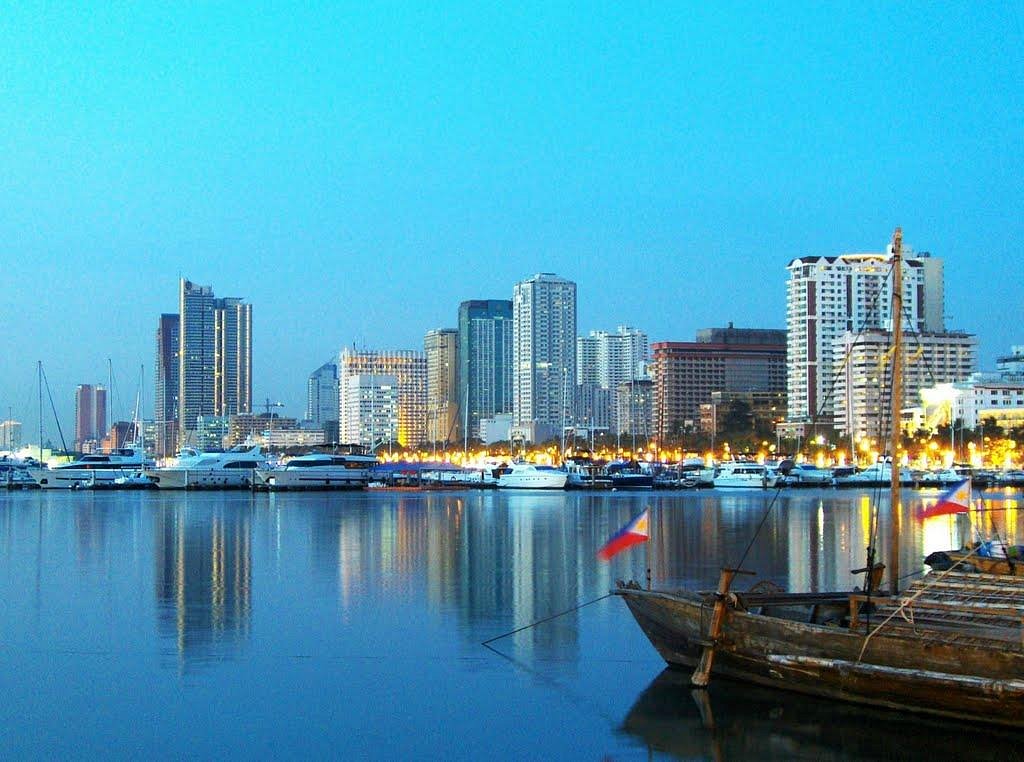
In recent years, Manila embraced smart urban planning and sustainability initiatives. Major government projects in the 21st century include expansion of mass transit systems and manila bay rehabilitation, with a major aim to address environmental challenges. The rise of business process outsourcing (BPO) industries and digital infrastructure has positioned Manila as a key player in the global economy.
Today, Manila stands as a dynamic metropolis, balancing historical preservation with modernization. While challenges such as traffic congestion, pollution, and urban poverty persist, ongoing development projects continue to reshape the city. The Philippine Republic’s commitment to progress ensures that Manila remains a vital economic, political, and cultural center in Southeast Asia.
References
https://historytimelines.co/timeline/manila-philippines
Santos, J. (2022). Spanish Colonial Enclave Urbanism: Manila’s Intramuros and how exclusion and waterway connectivity created the Binondo Manila Chinatown Trading District. ResearchGate [online]. Available at: https://www.researchgate.net/publication/362807229_Spanish_Colonial_Enclave_Urbanism_Manila’s_Intramuros_and_how_exclusion_and_waterway_connectivity_created_the_Binondo_Manila_Chinatown_Trading_District
https://whc.unesco.org/fr/listesindicatives/6715/#
https://www.asianstudies.org/publications/eaa/archives/america-and-the-philippines/
